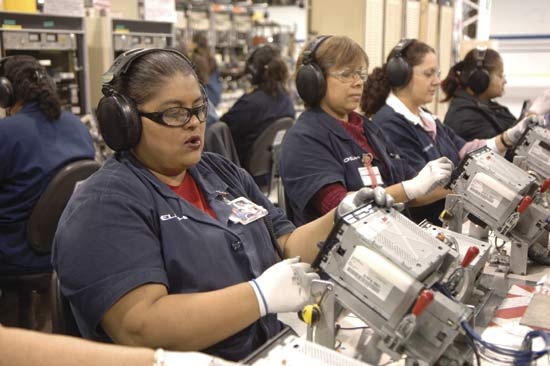maquiladora
factory
byname maquila
 manufacturing plant that imports and assembles duty-free components for export. The arrangement allows plant owners to take advantage of low-cost labour and to pay duty only on the “value added”—that is, on the value of the finished product minus the total cost of the components that had been imported to make it. The vast majority of maquiladoras are owned and operated by Mexican, Asian, and American companies.
manufacturing plant that imports and assembles duty-free components for export. The arrangement allows plant owners to take advantage of low-cost labour and to pay duty only on the “value added”—that is, on the value of the finished product minus the total cost of the components that had been imported to make it. The vast majority of maquiladoras are owned and operated by Mexican, Asian, and American companies.Maquiladoras originated in Mexico in the 1960s, with many of the plants located in the border towns of northern Mexico. (In Spanish, the word maquila means “processing fee.”) The maquiladoras became a means of providing employment and significant foreign-exchange earnings for Mexico's developing economy; maquiladora employment increased from approximately 200,000 in the mid-1980s to more than 1,000,000 in the late 1990s. In time, other countries started taking advantage of this system. Many Japanese companies were producing goods through the maquiladora system by the 1980s, and other Asian manufacturers soon followed.
By the end of the 20th century, a number of Latin American and Asian countries had instituted maquiladoras for the manufacture of foreign goods. In the mid- to late 1990s, however, several maquiladoras in Honduras, Mexico, and the Dominican Republic were criticized for substandard working conditions and excessively long workweeks (up to 75 hours, without overtime compensation) as well as for contributing to environmental pollution. The majority of maquiladora workers in Latin America are women, and in some areas children are also employed. Most of the plants are not unionized.
In 1993 the United States, Mexico, and Canada adopted the North American Free Trade Agreement (NAFTA), which created the “Free Trade Zone” among the countries. This led to new American-owned assembly plants in Mexico and greater trade between the two countries. These maquiladoras make it possible for American companies to produce lower-priced goods because of the lower labour costs, but they can also diminish job opportunities for American workers. The latter was a hotly debated issue in the United States in the 1990s and early 2000s.
- Latinius Pacatus Drepanius
- Latin language
- Latin League
- Latin literature
- Latino Voters
- Latinus
- latissimus dorsi
- latite
- latitude and longitude
- latitudinarian
- Latium
- La Tour, Charles
- La Tour, Georges de
- La Tour, Maurice-Quentin de
- Latreille, Pierre-André
- La Trinité
- Latrobe, Benjamin
- Latrobe Valley
- La Trémoille Family
- La Trémoille, Georges de
- Latter Rain revival
- Lattes, C.M.G.
- lattice energy
- Lattimore, Owen
- Lattimore, Richmond